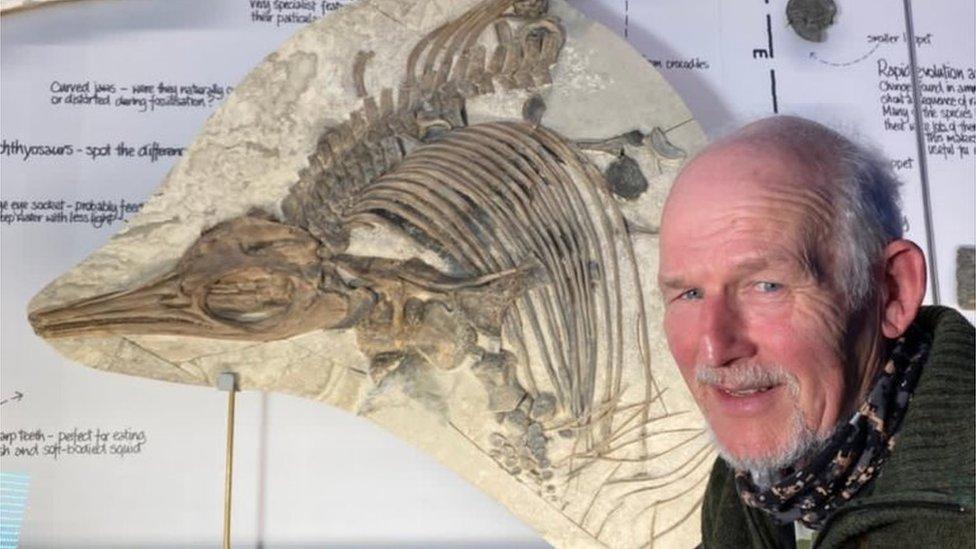New Prehistoric sea dragon discovered off UK coast
- Published
- comments

Dr Etches discovered the fossil buried in Limestone
A new species of prehistoric sea dragon has been discovered on a beach in the UK.
The two-metre long fossil was discovered off the coast of Dorset by fossil hunter Dr Steven Etches.
Intrigued by its unusual teeth, Dr Etches passed the fossil on to a group of experts at the University of Portsmouth to help identify it.
They discovered that it was a completely new genus and species of Ichthyosaur, (also known as sea dragons) which lived 150 million years ago.
The new species has now been named Thalassodraco etchesi - or Etches sea dragon, and Dr Etches said he felt "honoured" for it to be named after him.
What were Ichthyosaurs like?
This is a drawing of what the Thalassodraco etchesi might have looked like
Ichthyosaurs were highly adapted marine predators, which lived in the Mesozoic era.
They looked a bit like dolphins and had streamlined bodies for gliding through the water quickly, large eyes for enhanced vision, and long jaws full of cone-shaped teeth, which were great for catching slippery fish and squid.
The newly discovered species has a deep ribcage, small front legs and hundreds of tiny, smooth teeth.
Researchers think this ichthyosaur is only the fifth to be discovered in the UK, and is the smallest one so far.
The fossil was extremely well preserved
Megan Jacobs who was one of the researchers to take a look at the new species said: "Skeletons of Late Jurassic ichthyosaurs in the UK are extremely rare, so, after doing some research, comparing it with those known from other Late Jurassic deposits around the world and not being able to find a match was very exciting.
"Steve's incredible collection contains many new and exciting animals and being given the chance to describe this ichthyosaur was a real privilege." she said.
The Ichthyosaur fossil is on display with some of Dr Etches's other fossil-finds in his museum in Dorset.
- Published6 August 2019
- Published22 July 2017
- Published6 December 2018
